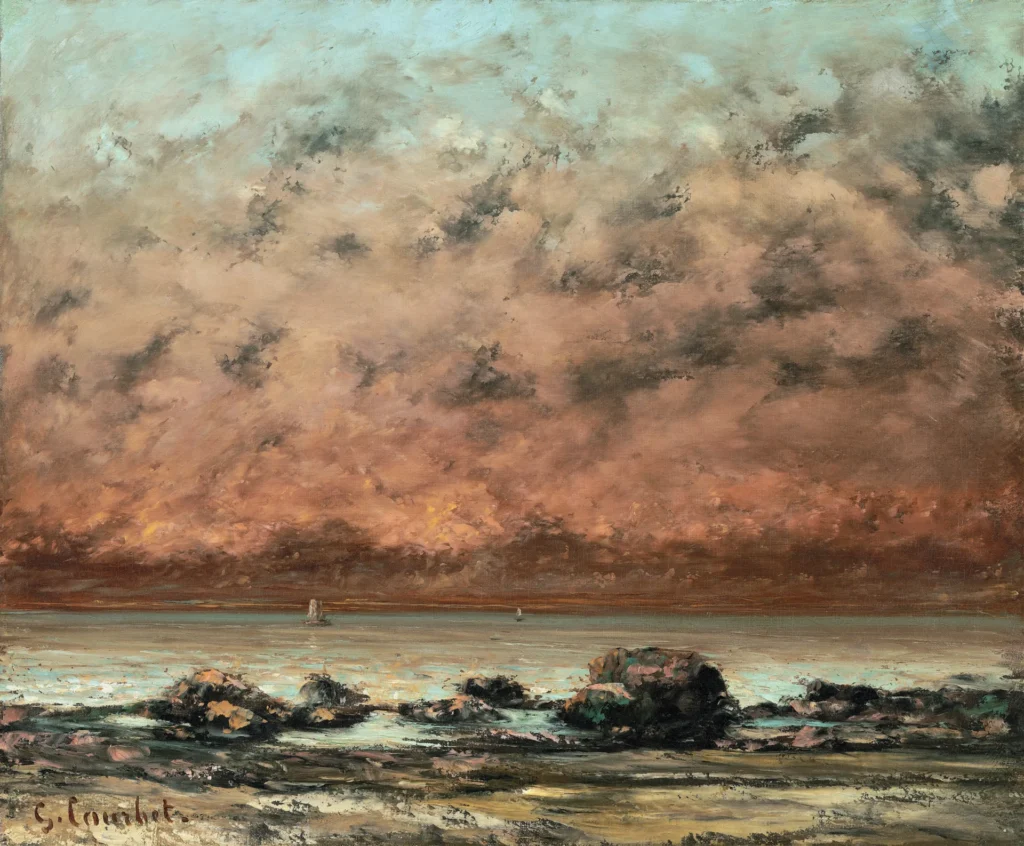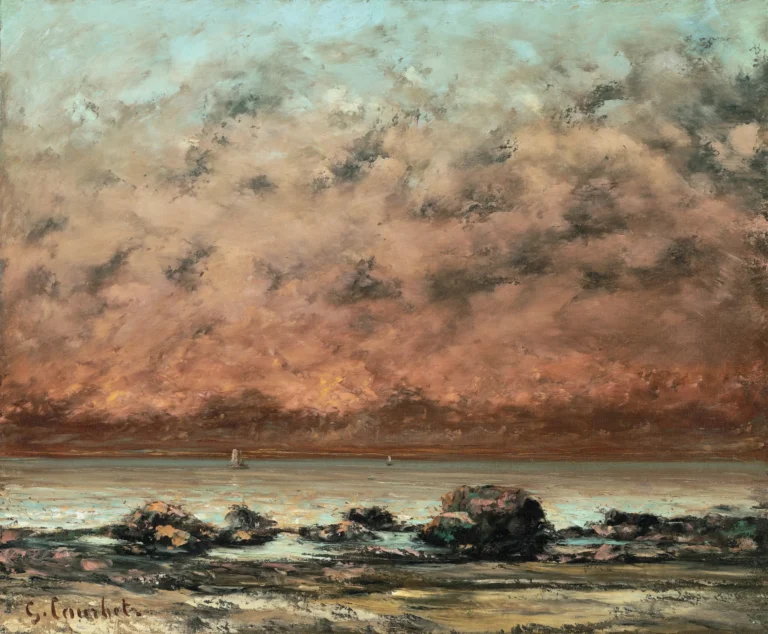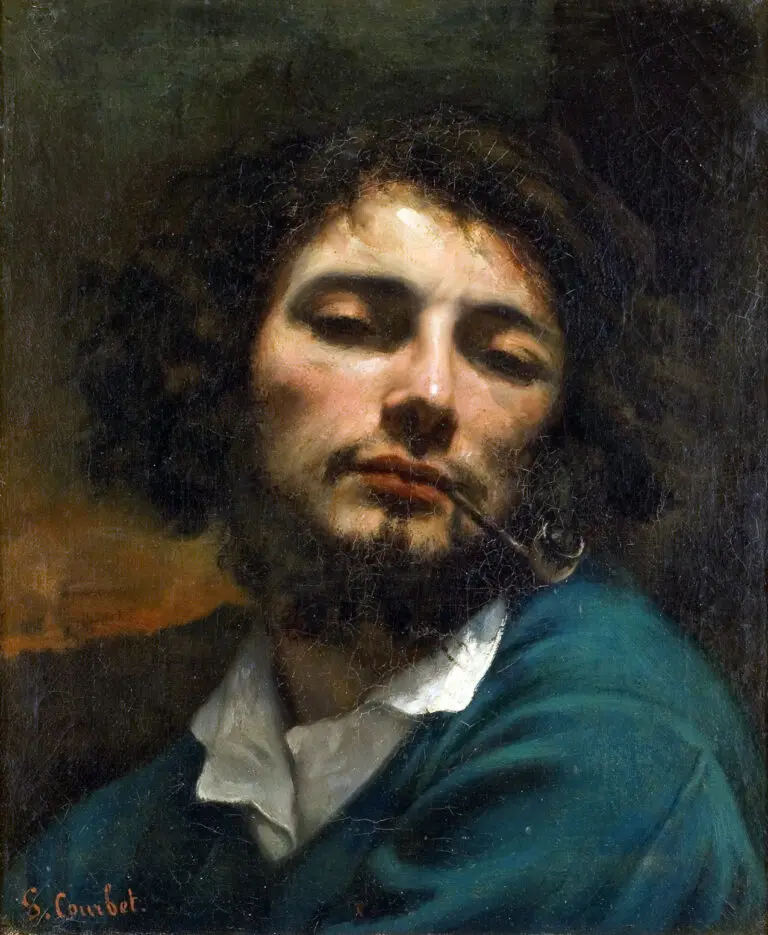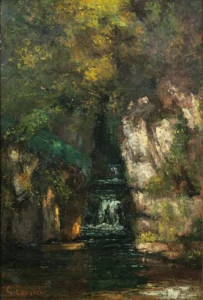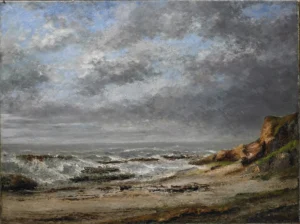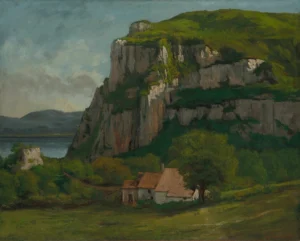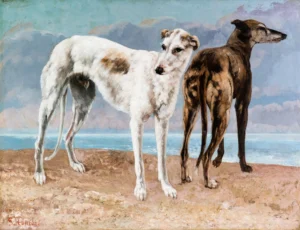The Black Rocks at Trouville (1865-1866)
Gustave Courbet's The Black Rocks at Trouville. created between 1865 and 1866, exemplifies the raw beauty and dynamic interplay of light on the Normandy coast. Measuring 50 x 61 cm, this oil on canvas painting depicts a captivating scene where rocks meet the wet sand under a vibrant sunset sky, showcasing Courbet's innovative use of brushwork and palette knife techniques that invite viewers to immerse themselves in this coastal landscape.
1865 - 1866
About the Artwork
Created during Courbet's exploration of coastal landscapes, The Black Rocks at Trouville serves as a testament to his innovative spirit and dedication to capturing nature's transient beauty. While living and painting in Trouville, he engaged with the ever-changing light and weather, allowing these elements to shape his artistic expression. The painting was exhibited in Paris in 1865 and later featured at the 1867 Paris World’s Fair, highlighting its importance in establishing landscape paintings as a central genre for avant-garde practice. Courbet's connections with fellow artists of the time fostered a community that would eventually transition into the Impressionist movement, making this artwork a pivotal piece in art history.
Did You Know
Gustave Courbet was a leading figure in the Realism movement, which aimed to depict everyday subjects and scenes with an unidealized approach. This painting reflects his commitment to portraying nature truthfully, a principle central to Realism.
Courbet’s innovative techniques and focus on natural light in The Black Rocks at Trouville had a profound impact on the Impressionist artists who followed him. Many of these artists, including Claude Monet, were inspired by Courbet’s approach to capturing ephemeral moments in nature.
During the 1860s, Trouville became a vibrant hub for artists drawn to its coastal beauty. Courbet painted alongside contemporaries like Eugène Boudin and James Whistler, fostering an artistic dialogue that enriched their work and contributed to the evolution of modern landscape painting.




